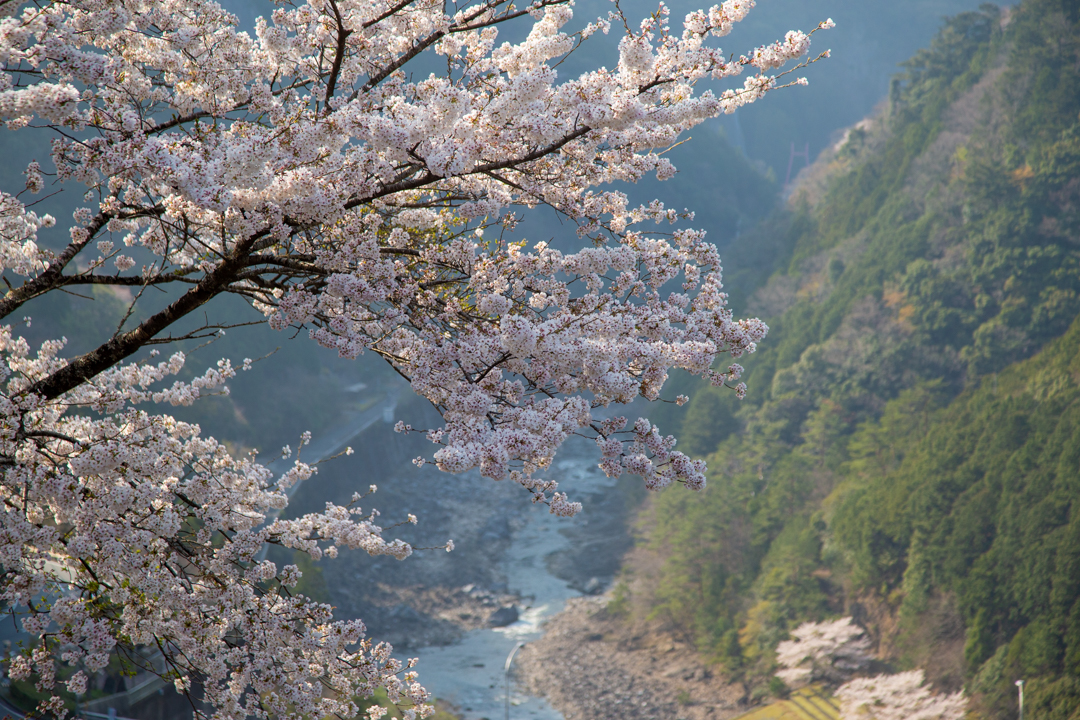こうだこ・Kodako

Kodako’s shrine is worth a visit to anyone passing through the hamlet. It is located high up on a hill and requires a around five minutes of walking.
Down below, there is a small open roofed structure known as an azumaya that was constructed recently for locals to congregate at. Structures like give people a place to meet, can be built at a low cost, and are a fantastic investment that can really benefit communities. Without a place to gather, many communities simply don’t. In the warmer months you can find locals here sitting around drinking and snacking together until well into the night.
A taxi company is located conveniently walking distance away from this. Rates within the village are discounted at half price.
This hamlet is also a great place to jog and if you continue past the hamlet on towards Kodako you will run along a small tributary of the Yoshino river. In around 10 or 15 minutes you will be met by two enormous cedar trees, standing as sentinels for Kodako and Mt. Omine, which can be approached by taking the road to the right of the fork.
These trees are at least 200 years old and seem like entirely different creatures from the plantation cedars with stunted growth because they are packed to tight together. These natural beasts tower above and seem to speak to your heart in a way that words cannot. They’ve survived pandemics, world wars, economic crashes, and generations of humans coming and going. They are both apart from and beyond human affairs.

























